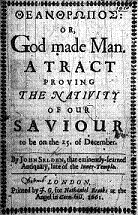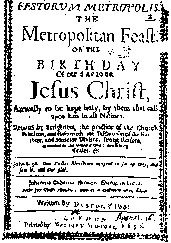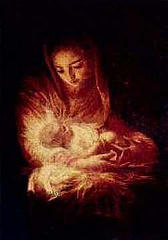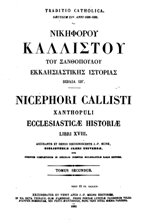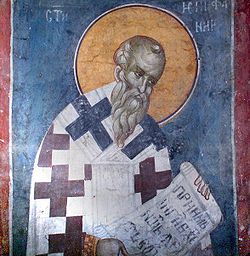The Julian and Gregorian Calendars
Excerpt from an article
by Peter Meyer
2. The Gregorian Reform
The average length of a year in the Julian Calendar is 365.25 days (one additional day being added every four years). This is significantly different from the "real" length of the solar year. However, there is uncertainty among astronomers as to what the length of the solar year really is (see Simon Cassidy's Erro in Statement of Tropical Year.). The main competing values seem to be the "mean tropical year" of 365.2422 days ("mean solar days") and the "vernal equinox year" of 365.2424 days. The difference of the length of the Julian calendar year from the length of the real solar year is thus 0.0078 days (11.23 minutes) in the former case and 0.0076 days (10.94 minutes) in the latter case.
 Whatever, this error accumulates so that after about 131 years
the calendar is out of sync with the equinoxes and solstices by
one day. Thus as the centuries passed the Julian Calendar became
increasingly inaccurate with respect to the seasons. This was
especially troubling to the Roman Catholic Church because it
affected the determination of the date of Easter, which, by the
16th Century, was well on the way to slipping into Summer.
Whatever, this error accumulates so that after about 131 years
the calendar is out of sync with the equinoxes and solstices by
one day. Thus as the centuries passed the Julian Calendar became
increasingly inaccurate with respect to the seasons. This was
especially troubling to the Roman Catholic Church because it
affected the determination of the date of Easter, which, by the
16th Century, was well on the way to slipping into Summer.
Pope Paul III recruited several astronomers, principally the Jesuit Christopher Clavius (1537-1612), to come up with a solution. They built upon calendar reform proposals by the astronomer and physician Luigi Lilio (d. 1576). When Pope Gregory XIII was elected he found various proposals for calendar reform before him, and decided in favor of that of Clavius. On 1582-02-24 he issued a papal bull, Inter Gravissimas, establishing what is now called the Gregorian Calendar reform. (The full text may be read in both the Latin original and a French translation by Rudolphe Audette, and in an English translation, recently done by Bill Spencer.)
The Gregorian reform consisted of the following:
- Ten days were omitted from the calendar, and it was decreed that the day following (Thursday) October 4, 1582 (which is October 5, 1582, in the old calendar) would thenceforth be known as (Friday) October 15, 1582.
- The rule
for leap years was changed. In the Julian Calendar a year is
a leap year if it is divisible by 4. In the Gregorian
Calendar a year is a leap year if either (i) it is divisible
by 4 but not by 100 or (ii) it is divisible by 400. In
other words, a year which is divisible by 4 is a leap year
unless it is divisible by 100 but not by 400 (in which case
it is not a leap year). Thus the years 1600 and 2000 are
leap years, but 1700, 1800, 1900 and 2100 are not.
- New rules
for the determination of the date of Easter were adopted.
- The position of the extra day in a leap year was moved from the day before February 25th to the day following February 28th.
To Read the whole article, follow the link below
http://www.hermetic.ch/cal_stud/cal_art.html
______________________________
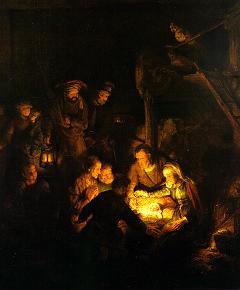
Adoration of the Shepherds
All rights reserved.
 John Seleden’s
John Seleden’s